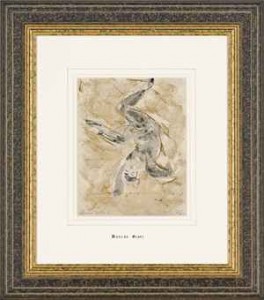Why Julian Bell Went to China?
Posted: August 6th, 2014 | 1 Comment »I’m going to assume that most China Rhyming readers are aware, at least partially, of Julian Bell and his time in China in the 1930s. Born in 1908, the son of the artists Clive and Vanessa Bell (Virginia Woolf’s sister), after Cambridge Bell went to China in 1935 to teach English at Wuhan University. There of course he had a notorious affair that scandalised the college, led to his firing, and has since been novelised rather controversially by Hong Ying in her book K: The Art of Love (which I rather liked, but lots of people don’t and the heirs of Ling Shuhua certainly did not). However, the Bloomsbury Group/Crescent Moon Society crossovers are fascinating. After China Bell went as a volunteer ambulance driver to aid the Spanish Republic and was killed, after a just a month, at the Battle of Brunete, aged just 29.
But where did Bell’s interest in China come from? It’s often assumed it was a combination of the European depression, wanting to escape the claustrophobic confines of his parents’ reputations (and their rather tangled love affairs) and the Bloomsbury set, with a bit of Left wing odyssey, general curiosity and wanderlust thrown in. However, perhaps China, or an idea of China, was inculcated in Bell far earlier.
A recent visit to Charleston, the boyhood home of Bell in Sussex and the home of Vanessa Bell and Duncan Grant (and various others over the times they all loved there as the Bloomsbury Group in the country) offers a few clues. A major one is that the house is largely painted with murals and decals by Vanessa Bell and Duncan Grant. Bloomsbury of course liked it Chinoiserie, and Charleston has any number of blue and white plates, Chinese sculptures and Chinesey bits and bobs. More interestingly perhaps, on one door panel is painted a Chinese acrobat, by Duncan Grant. This idea would later be the subject of a more formal painting by the artist….See below first the door panel at Charleston and then the later drawing in pencil, watercolour and gouache on buff paper. Perhaps it was this Chinese acrobat Bell saw as a child every day on the door of the living room at Charleston that partly led to his trip to China in 1935?
 signed with initials ´DG´ (lower right) and inscribed ´Chinese Theatre Co.´ (lower left)
signed with initials ´DG´ (lower right) and inscribed ´Chinese Theatre Co.´ (lower left)

Fascinating questions. I recommend Patricia Laurence, Lily Briscoe’s Chinese Eyes: Bloomsbury, Modernism, and China (http://www.amazon.co.uk/Lily-Briscoes-Chinese-Eyes-Bloomsbury-ebook/dp/B00AMR8P2Q/ref=sr_1_1?ie=UTF8&qid=1407268442&sr=8-1&keywords=patricia+laurence+briscoe) for a non-fictional account. Of course, K – The Art of Love is interesting too (and I’m not just saying that because I translated it), as it contains some of Julian’s real letters.